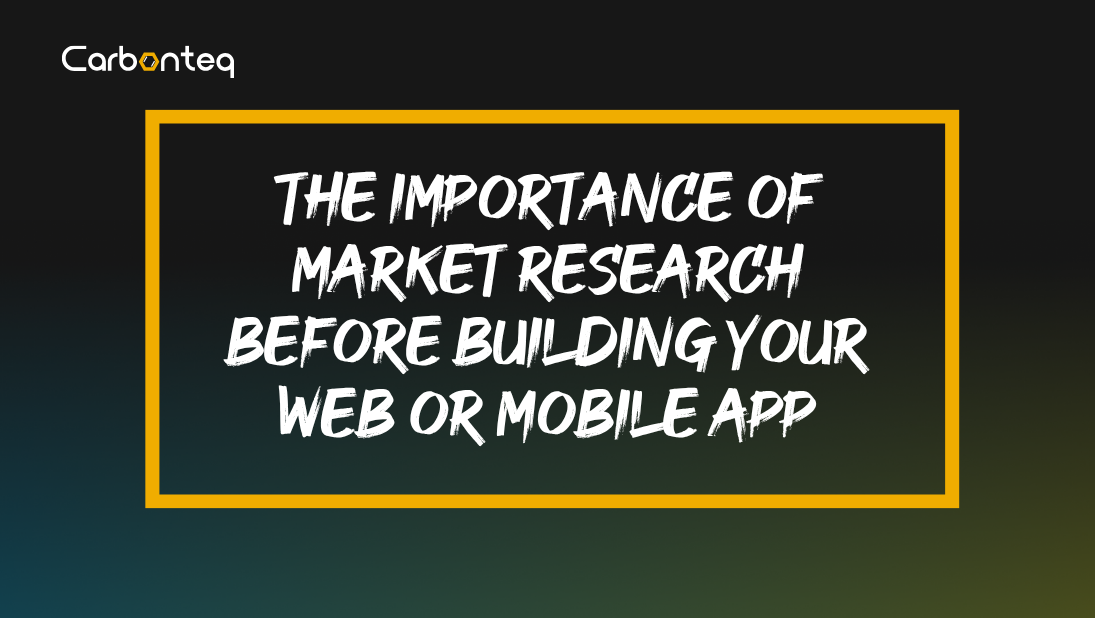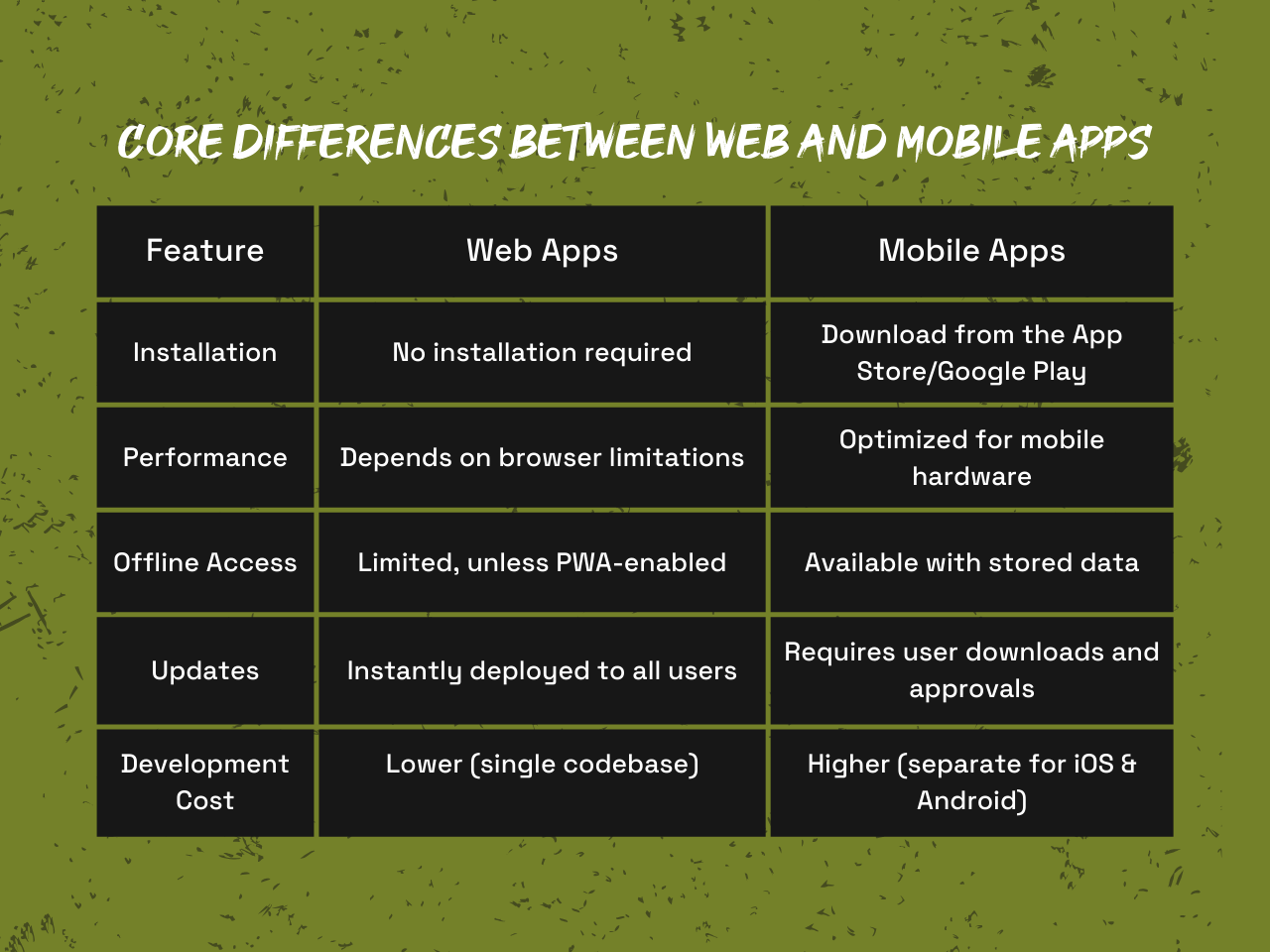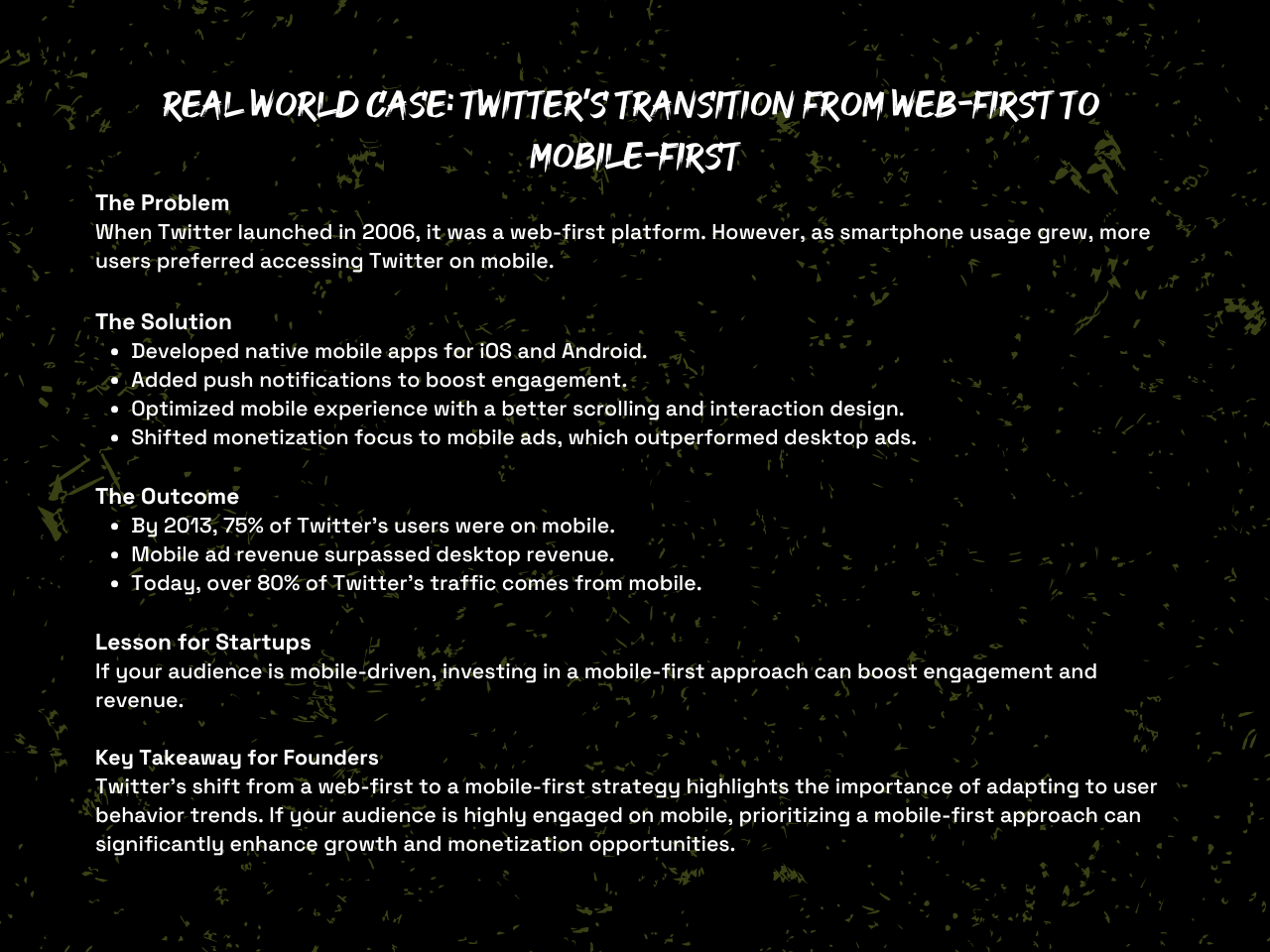Mobile vs. Web: Which Platform Should Founders Prioritize First?

For any digital product startup founder the decision between building a web app or a mobile app first is critical. This choice influences user engagement, development costs, monetization potential, and overall scalability. While mobile apps provide deeper engagement through device-native features like push notifications and offline access, web apps offer broader accessibility and lower entry barriers.
Additionally, user behavior plays a significant role—some industries thrive onmobileexperiences (e.g., fitness, social media), while others rely on the web for discoverability and ease of use (e.g., SaaS, e-commerce). This article will break down the differences between the two platforms, analyze how users interact with them, and guide founders on making an informed decision based on business goals, audience, and budget.
A great example is Instagram, which started as a mobile-first platform due to its image-heavy, engagement-driven nature. In contrast, Slack prioritized web and desktop apps, catering to professionals and businesses needing collaboration tools.
Web vs. Mobile Apps: Key Differences
Before deciding which platform to prioritize, founders need to understand the technical and functional differences between web and mobile applications.
Web Apps
- Accessible via browsers: Users do not need to download anything; they simply visit a website.
- Cross-platform compatibility: Works on any device with a browser, making it accessible to a larger audience.
- Dependency on an internet connection: Most web apps require an internet connection, but PWAs can work offline to some extent.
- Easier updates: Since updates are made on the server-side, users always get the latest version.
- Best for SaaS, content-driven platforms, and businesses relying on search traffic.
Mobile Apps
- Installed via app stores: Users download and install apps from Google Play or Apple App Store.
- Optimized for mobile experience: Provides a smoother UI and faster performance compared to browser-based platforms.
- Can work offline: Many mobile apps function without an internet connection, making them more reliable for users on the go.
- Access to device features: Native integration with GPS, push notifications, biometric authentication, and cameras enhances functionality.
- Best for consumer-facing apps, high-engagement industries, and subscription models.

Understanding User Behavior and Preferences
The success of a platform choice heavily depends on how users interact with technology. Here’s how behavior and preferences shape the decision:
Usage Patterns
- Frequent interactions favor mobile apps: Social media, fitness, and on-demand services tend to thrive on mobile because users engage multiple times per day.
- Transactional or information-seeking behavior suits web apps: When users need quick, single-visit access (e.g., researching a topic, reading an article, or using an online tool), web platforms are more convenient.
Cost, Development, and Scalability Considerations
Development Complexity and Costs
- Web platforms have lower upfront costs: A single codebase can work across all devices, reducing development time and costs.
- Mobile apps require separate development for iOS and Android: This increases initial expenses but provides a more polished, native experience.
- Hybrid frameworks like React Native or Flutter can help: They reduce development costs by enabling cross-platform mobile development with a single codebase, though they may sacrifice performance compared to fully native apps.
User Experience and Engagement Factors
Engagement Features
- Push notifications drive user retention on mobile: Apps like Duolingo send daily reminders, increasing long-term engagement.
- Web platforms leverage SEO and content marketing for growth: SaaS platforms rely heavily on organic search to drive traffic and acquire customers.
Monetization and Growth Strategy
Revenue Models
- Subscription-based services perform well on mobile: Apps like Netflix and Spotify rely on in-app purchases.
- Web platforms benefit from ad-driven revenue and SaaS models: Companies like HubSpot and Mailchimp thrive on web-first strategies with lead generation and freemium models.

Making the Right Decision
Web-First Approach Works Best When:
- You rely on search traffic and content visibility.
- Your product is a SaaS, B2B, or e-commerce site.
Mobile-First Approach Works Best When:
- User engagement and push notifications are key.
- You’re launching a fitness, gaming, or social media product.
Hybrid Approaches
- PWA's offer app-like experiences without installation.
- React Native enables cross-platform development.
Conclusion
Understanding how, where, and why users interact with digital platforms is crucial for determining whether mobile apps or web platforms should come first. If frequent engagement and native capabilities are necessary, a mobile app may be ideal. If broad accessibility, discoverability, and lower friction are priorities, starting with a web platform makes more sense.
Startups should align their choice with user behavior, business goals, and growth strategy. A web-first approach works well for broad accessibility, while mobile-first thrives on deep engagement. The right decision depends on your audience and monetization model.



